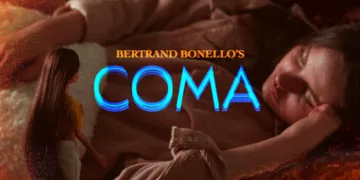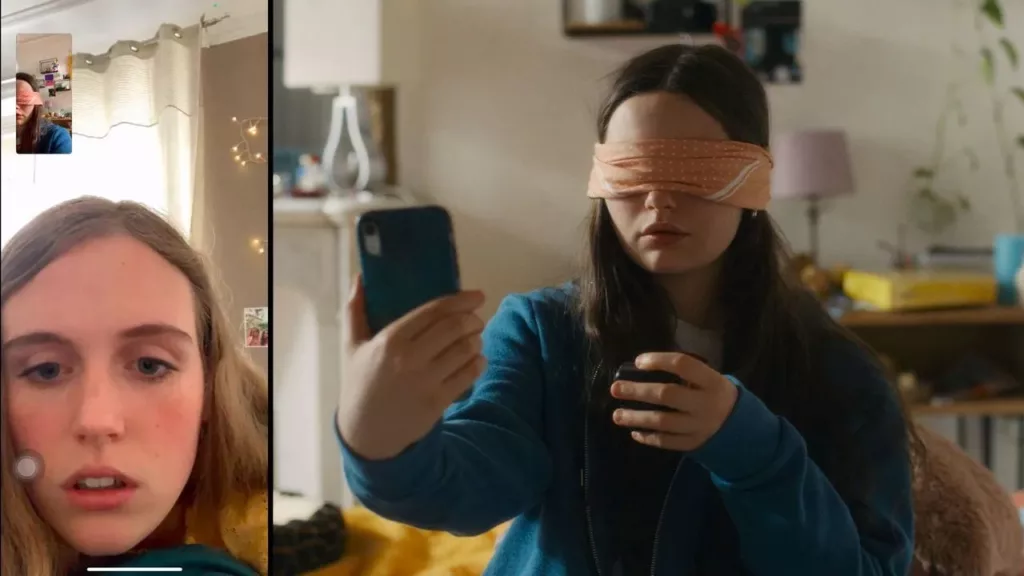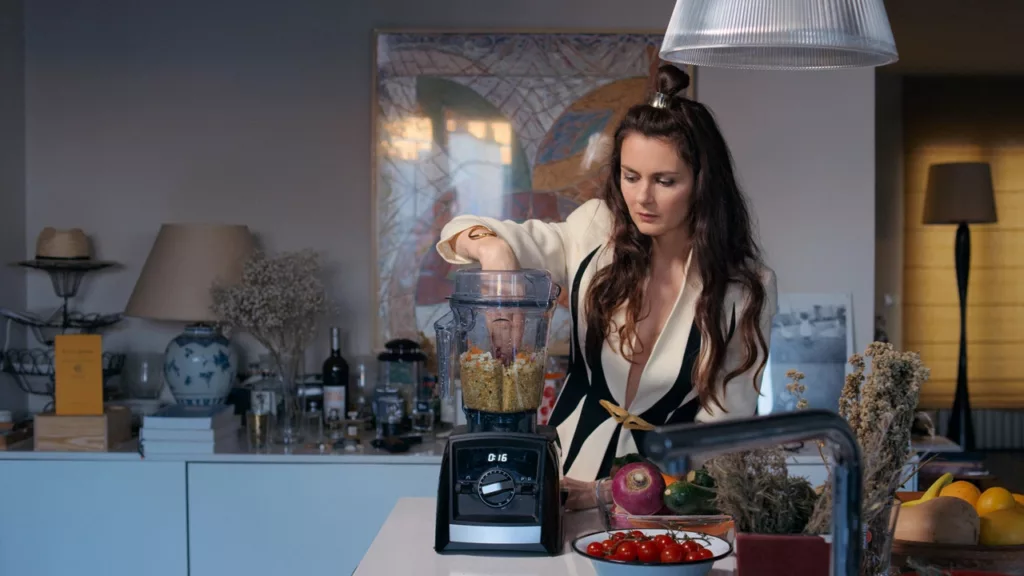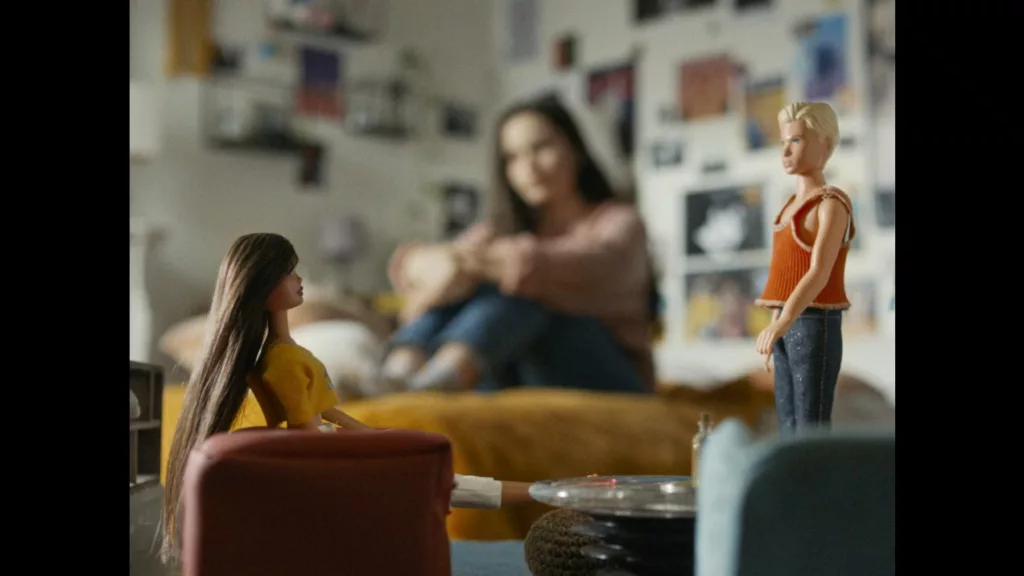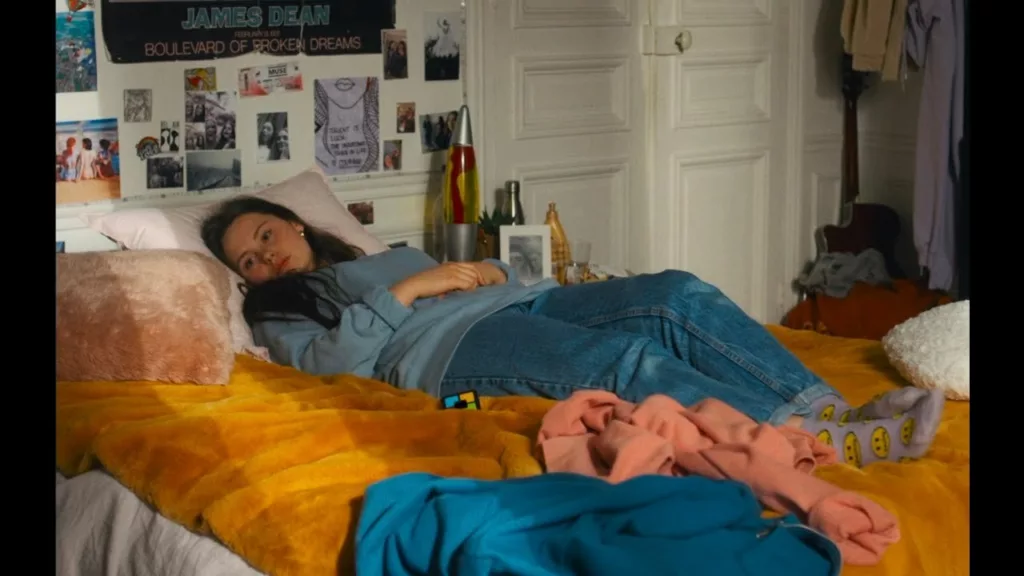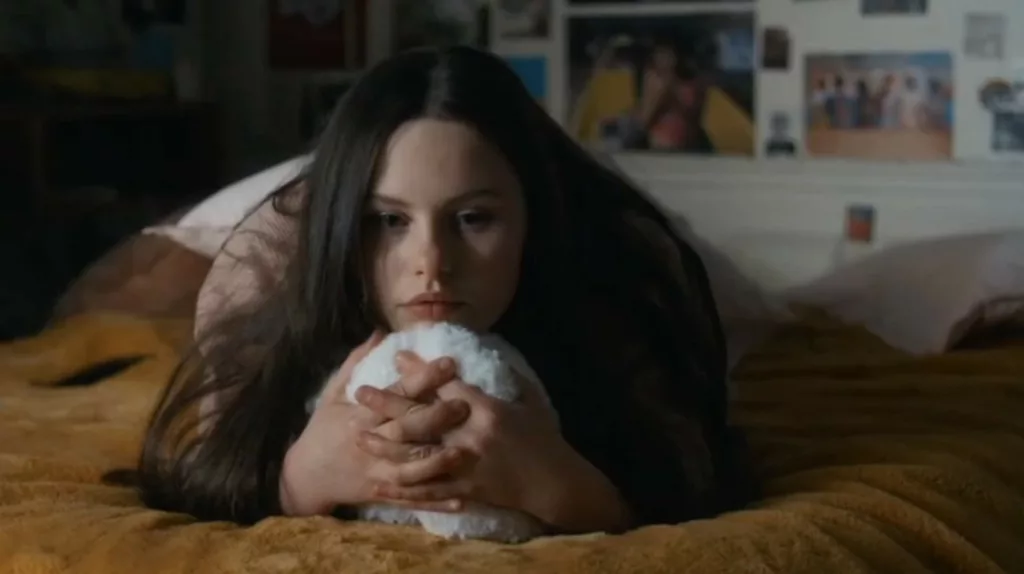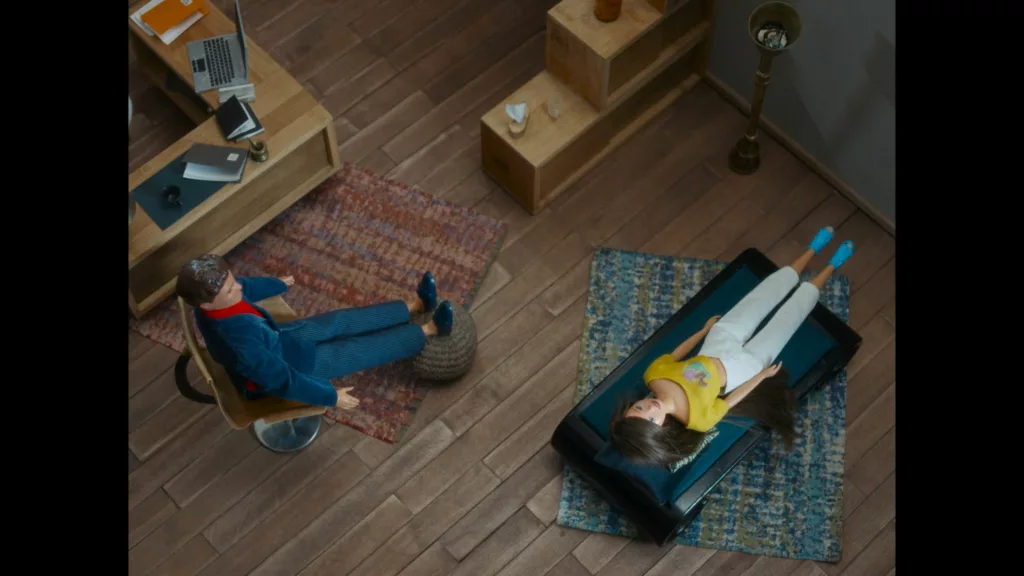Controversial French director Bertrand Bonello has never shied away from provocative topics in his films. Known for critiquing social issues through surreal lenses, two of his most striking works include the terrorism drama “Nocturama” and the period zombie tale “Zombi Child.”
In these films, Bonello blurs lines between genres to immerse viewers in disorienting worlds representing deeper societal realities. During the pandemic’s early lockdowns, Bonello tapped into society’s feelings of unreal isolation and uncertainty for his latest project, “Coma.” Starring his daughter Louise Labeque, “Coma” centers around a young woman confined alone amid society’s shutdown.
Through abstract visuals and an unstable sense of what’s real, Bonello examines modern technology’s effects on the psyche as dreams and social media streams blend in an infinite feed of information and escapism, reflecting pandemic anxieties around control over our minds and the true state of the world outside. Bold but introspective, “Coma” is a uniquely psychological pandemic film warranting deeper analysis of its daring exploration of inner and outer worlds.
Virtual Voyages
Locked in her bedroom due to pandemic restrictions, our protagonist feels increasingly disconnected from the outside world. Still a teenager, she finds herself thrust into solitary adulthood as normal life comes to a halt. Her phone and laptop have become lifelines, yet they are also doors to distraction and depression.
Through video calls, the young woman stays in touch with friends, discussing chilling true crime documentaries. But mostly she follows Patricia Coma, a popular YouTuber whose sunny persona hides deeper shadows. Coma’s videos offer shallow tips, unsettling product placements, and a kernel of doubt that free will exists at all. As the blur between fantasy and reality starts to blur, her message takes on disturbing dimensions.
To retain glimpses of meaning, the girl crafts miniature dramas starring her dolls. Imbued with celebrities’ voices through motion poetry, the toys act out soapy tales that morph into uncanny pastiches of current events. Her meticulous scenes suggest an active imagination coping with immense uncertainty.
When sleep comes, it brings not rest but strange voyages. Her dreams deposit her in an ominous forest filled with lost souls. There, Patricia awaits with enigmatic insights, and the trees seem crowded with reminders of mortality. Is this a nightmare born of isolation or a vision of society’s decline into a collective “free zone”?
As the film unfolds in a series of vivid yet disjointed tableaus, one gets a sense of a fractured psyche. Bonello highlights how virtual connectivity and sheer boredom warp perceptions of what’s real and imagined in a world that’s simultaneously stopped and spiraling out of control. Through it all, lurks the unanswered question of when and how this surreal daze might finally lift.
Themes of an Uncertain World
Technology’s growing role in our lives is both explored and blurred within Coma’s surreal world. Isolation has always been part of the human experience, but digital connections bring new layers of complexity. Our unnamed protagonist interacts with others primarily through screens, yet these conversations take on strange new dimensions. Reality and imagination merge at times, just as Zoom calls might while we adjust to “virtual” being the new normal.
Though it offers distraction and companionship, technology is also a source of control and manipulation. The “Revelator” toy raises chilling questions about free will and choice. As our heroine becomes obsessed with mastering its tests, repeating sequences without error, she loses herself in its deterministic rhythms. Our society, too, may be falling into automated patterns that are harder to break. Even comforting figures like YouTube star Patricia Coma wield influence that can enable or threaten, depending on their intentions.
Climate anxiety pervades the film, from apocalyptic dreams set in a flooded, murky forest to its bereft conclusion. Ghosts haunt this landscape not to frighten, but as a reminder of fragile lives and the urgent future we must face. If left unchanged, will our world become an inhospitable one, passing its own point of no return? Like Coma’s protagonist, we all grapple with hopes, fears, and powerlessness regarding the climate future left for coming generations.
Underlying all is an unsettled sense that the old “normal” has disappeared, dissolved within unprecedented times. A global crisis makes the personal feel planetary; every small action carries greater stakes.
Though disorienting, moments like these also call us to reconsider what progress truly matters and reconnect with beings and places suffering most from humanity’s consequences. In an unmoored world, dreams may become our sole place of freedom and truth, but they also show the paths we must walk to find meaning again.
Visual Voyages
Bertrand Bonello crafts Coma as much with its daring, disorientating style as with its enigmatic narrative. The cinematography by Antoine Parouty casts an unsettling, dreamlike spell, blurring lines between what’s real and imagined. Scenes shift fluidly between vibrant color and monochrome tones, drawing viewers deep into the protagonist’s fraying psyche. Tight close-ups and looming wide shots upend normal perspectives, while morphing aspect ratios break conventions.
Nothing is quite what it seems in Coma, and the visuals match this instability. Stop motion brings the doll scenes to surreal life, their chattering faces more unnerving for their handcrafted imperfection.
Elsewhere, rotoscoping transforms live action into eerie animation, with figures wandering the “free zone” like lost souls. Bonello splices in unrelated footage, further deconstructing boundaries in a disorienting collage. At times, we peer through surveillance lenses or lurk in shadowy corners, voyeurs in a fragmented dream.
Through such fluid techniques, Bonello challenges expectations. Coma unfolds not as a traditional narrative but as a disjoining stream, like flotsam on tides of anxiety. Its improvisational feel mirrors the protagonist’s frayed psyche; reality is unmoored. Bonello trusts viewers’ ability to immerse themselves in ambiguity and piece together fractured fragments. In Coma, seeing is not always believing, but the dazzling visuals intrigue and empower the investigation of life’s slipperier questions.
Lockdown Loneliness Captured
Louise Labèque brings nuanced life to the unnamed teenage protagonist, capturing the various shades of her isolation and unraveling psyche. Labèque makes us feel every fluctuation in the girl’s mood—her initial boredom, growing desperation for connection, moments of false comfort watching Patricia Coma’s videos, and inner turmoil playing out in disturbing dreams. It’s a sensitive performance that feels deeply authentic in communicating this character’s experience of being confined alone with her troubled thoughts.
No less unsettling is Julia Faure’s work as the enigmatic YouTuber Patricia Coma. Under her charming and helpful on-screen persona, Faure instills a subtle aura of manipulation and artifice. She reels the girl in while casually dropping hints of something darker lurking beneath. Her character’s tightening grasp on the teenager’s mental state is convincingly creepy.
Special praise is due to the voice acting of Gaspard Ulliel and others in the surreal dollhouse sequences. They bring hilarious black comedy but also piercing emotional insight as the dolls mouth musings that reflect the girl’s deepest anxieties.
Ulliel is perfectly cast as the unhinged Trump-spouting Ken doll. With just their voices, these actors breathe vibrant life into Bonnolo’s striking vision and add poignant layers to the exploration of a fragile mind slipping loose from reality.
The Lonely Girl in a Digital World
Locked away in her bedroom, the protagonist experiences the highs and lows of an intensely solitary existence. Through her computer and phone, the outside world enters this small space through streams of information and distant voices.
She spends long days absorbed in online videos, often tuning in to watch Patricia Coma, a soothing yet strangely unsettling social media personality. Coma delivers calming broadcasts on upbeat topics, yet her cheeriness takes on an unreal quality, and her products seem troubling. As the lines blur between this virtual friend and the real world, an unsettling codependence forms.
Time with friends comes through video chats, where deep conversations turn dark. Their interest in serial killers hints at how screens normalize the abnormal. Even a lighthearted call becomes chilling when a shadowy figure appears in the background.
When sleep brings escape to the forested ‘Free Zone,’ not all is as it seems. Familiar faces surface yet seem troubled, and Coma emerges again to leave the protagonist questioning what is real.
Technology interweaves the virtual and physical in Bonello’s surreal vision of modern isolation. Though screens offer connection, attention fragmentation takes its toll. Like the Revelator game testing memory’s limits, constant partial engagement leaves one vulnerable to unwanted outside influences.
As walls close in, the film captures the chill of solitary confinement within the digital domain. It presents a vision of the pandemic era, echoing the feelings of many marooned in the virtual world, grasping for understanding in a new reality that is both close and endlessly out of reach.
Lost in the Woods
The dreams of Coma’s unnamed protagonist serve as one of the film’s most unsettling sequences. When sleep takes her, she finds herself lost in a gloomy forest called the “Free Zone.” Among the darkened trees, familiar faces emerge like ghosts—people from her life who’ve passed on, now wordlessly watching her from the shadows. Their pale, CGI-rendered features enhance the strangeness. A feeling of disorientation washes over as reality and dreams blur together.
She’s not alone in this forlorn woodland. Patricia Coma appears there too; her mentor from the screen has now physically materialized. Coma tells the girl this grim domain is where free will exists, one of the film’s many metaphysical musings. Yet the notion of free will does little to comfort in such a lonesome, lurching landscape. Frantic camera work reflects the protagonist’s panicked perspective amid places and people she knows but no longer understands.
Bonello’s dreamscapes epitomize the film’s overarching sense of disjointedness. Within an ever-shifting narrative, stable grounds of imagination, online persona, and personhood dissolve. Like the teenager adrift in slumber, we find familiar bearings continually swept away. Her subconscious manifestations of family, friends, and virtual companions merge into an abstracted nightmare.
This bleeds into waking scenes as well. Cellphone calls and YouTube clips weave organically into live action as internal and external planes fuse. Does the twist-ending occur in physical reality, or has the protagonist fallen deeper into troubled visions?
In Coma’s surreality, there is no clear answer. Only ambiguity remains, mirroring the isolated individual’s disconnection from grounding forces in a time unmoored. Bonello crafts a work that unsettles precisely because it resembles the blurry subjective state of a mind escaping into dreams to avoid a world and future, feeling increasingly out of control.
Coma’s Unflinching Vision
Bertrand Bonello’s film Coma divides audiences with its unconventional storytelling and surreal juxtapositions. However, beneath the intentionally disjointed surfaces lies a skillful examination of themes still relevant today.
Coma focuses less on narrative cohesion than on creating a dreamlike mood reflective of prolonged isolation. Through a young woman’s fluctuating realities—her videos with internet personality Patricia Coma, stop-motion doll scenes, and enigmatic forest dreams—Bonello explores how physical barriers blur inner and outer worlds. Some find Coma mere self-indulgence, but it offers poignant social commentary. As community fades behind screens, empty online connections and mass tragedies as entertainment become disturbingly plausible.
Bonello never intended a traditional plot so much as to convey lockdown’s psychological impacts. With sensitive performances and unflinching imagery, he triggers thought on today’s anxieties around control, media manipulation, and an uncertain future. Thoughdivisive, Coma will surely be remembered as one of the earliest artistic attempts to document the pandemic’s effects on humanity. When normalcy changed overnight and loneliness pervaded, Bonello’s surreal vision penetrated into experiences universally shared.
Coma challenges viewers with its unconventionality, as all groundbreaking works do. But its persistence in confronting realities and probing isolation’s repercussions rings true two years post-lockdown. Bonello crafts not answers but important questions still worth asking.
The Review
Coma
While Coma divides based on its experimental form, Bertrand Bonello's thoughtful examination of modern loneliness and blurred realities renders it a haunting portrait of a crisis that changed the world. By penetrating the shared experiences of lockdown through an intimate yet unflinching lens, Coma has become the galvanizing work of its time. Though not for all tastes, Bonello's bold vision merits attention and debate.
PROS
- Thought-provoking conceptualization and commentary on themes of isolation, control, and an uncertain future
- Evocative, dreamlike aesthetic that effectively conveys the psychological impacts of lockdown
- Sensitive performances that trigger reflection on universally shared anxieties and experiences
- Skillful direction that underscores the film as important early work documenting the pandemic era
CONS
- Unconventional narrative structure prioritizes mood over plot coherence for some viewers.
- Ambiguous and surreal elements may frustrate those seeking straightforward storytelling.
- Iconoclastic abstract experimentation risks being viewed as self-indulgent navel-gazing.
- Provocative social commentary couched in impenetrable dream logic for less open-minded audiences
